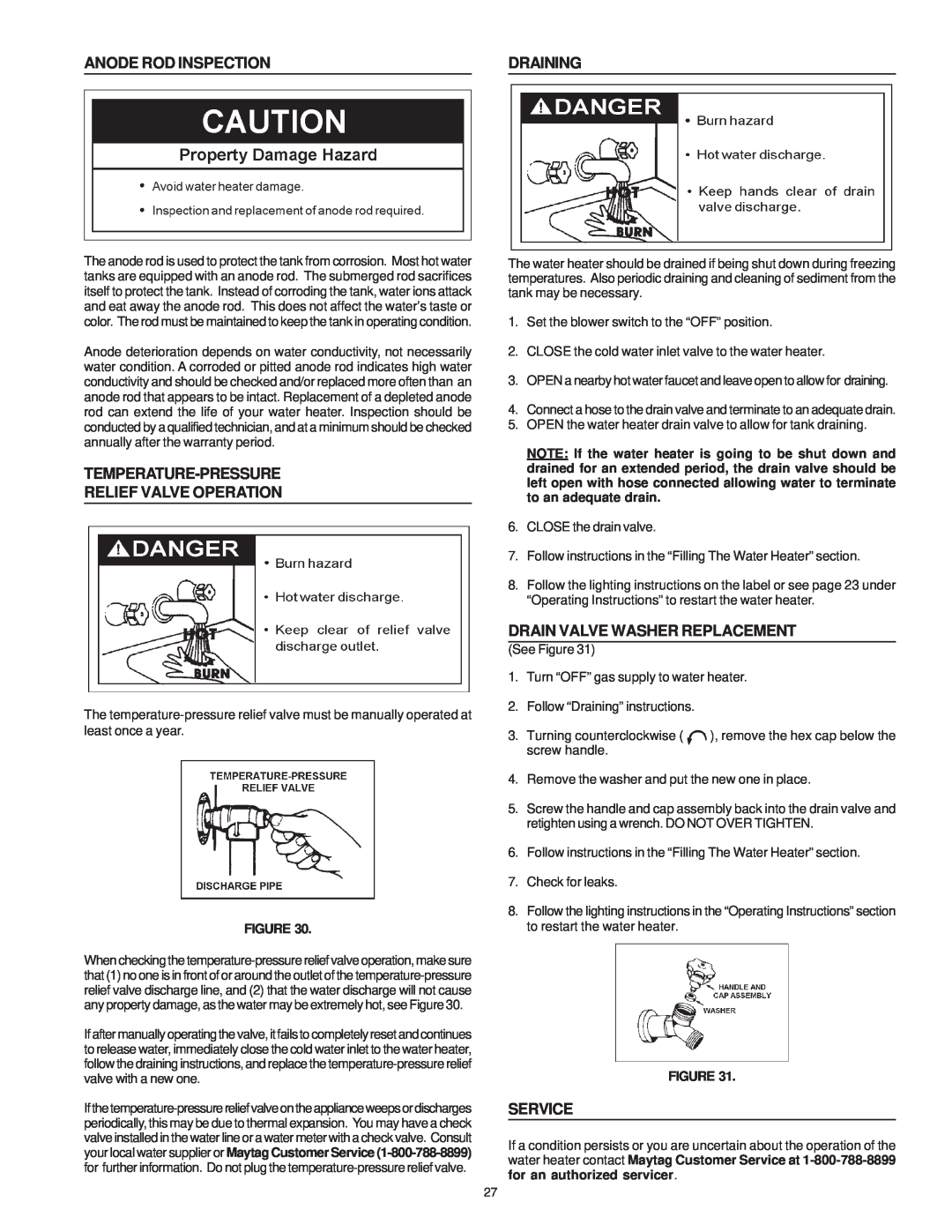
ANODE ROD INSPECTION |
| DRAINING |
The anode rod is used to protect the tank from corrosion. Most hot water tanks are equipped with an anode rod. The submerged rod sacrifices itself to protect the tank. Instead of corroding the tank, water ions attack and eat away the anode rod. This does not affect the water’s taste or color. The rod must be maintained to keep the tank in operating condition.
Anode deterioration depends on water conductivity, not necessarily water condition. A corroded or pitted anode rod indicates high water conductivity and should be checked and/or replaced more often than an anode rod that appears to be intact. Replacement of a depleted anode rod can extend the life of your water heater. Inspection should be conducted by a qualified technician, and at a minimum should be checked annually after the warranty period.
TEMPERATURE-PRESSURE
RELIEF VALVE OPERATION
The
FIGURE 30.
When checking the
If after manually operating the valve, it fails to completely reset and continues to release water, immediately close the cold water inlet to the water heater, follow the draining instructions, and replace the
The water heater should be drained if being shut down during freezing temperatures. Also periodic draining and cleaning of sediment from the tank may be necessary.
1.Set the blower switch to the “OFF” position.
2.CLOSE the cold water inlet valve to the water heater.
3.OPEN a nearby hot water faucet and leave open to allow for draining.
4.Connect a hose to the drain valve and terminate to an adequate drain.
5.OPEN the water heater drain valve to allow for tank draining.
NOTE: If the water heater is going to be shut down and drained for an extended period, the drain valve should be left open with hose connected allowing water to terminate to an adequate drain.
6.CLOSE the drain valve.
7.Follow instructions in the “Filling The Water Heater” section.
8.Follow the lighting instructions on the label or see page 23 under “Operating Instructions” to restart the water heater.
DRAIN VALVE WASHER REPLACEMENT
(See Figure 31)
1.Turn “OFF” gas supply to water heater.
2.Follow “Draining” instructions.
3. Turning counterclockwise ( | ), remove the hex cap below the |
screw handle. |
|
4.Remove the washer and put the new one in place.
5.Screw the handle and cap assembly back into the drain valve and retighten using a wrench. DO NOT OVER TIGHTEN.
6.Follow instructions in the “Filling The Water Heater” section.
7.Check for leaks.
8.Follow the lighting instructions in the “Operating Instructions” section to restart the water heater.
FIGURE 31.
SERVICE
If a condition persists or you are uncertain about the operation of the water heater contact Maytag Customer Service at
27
